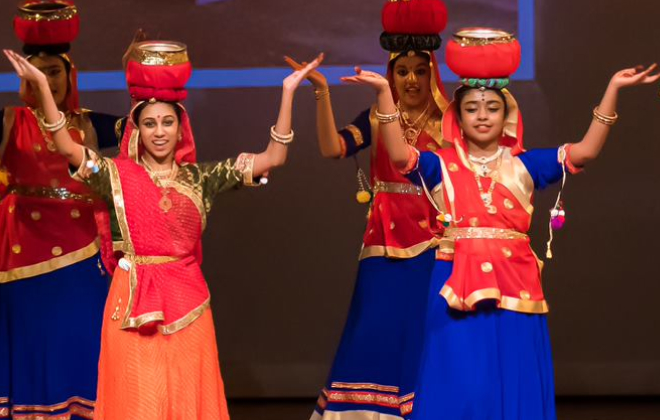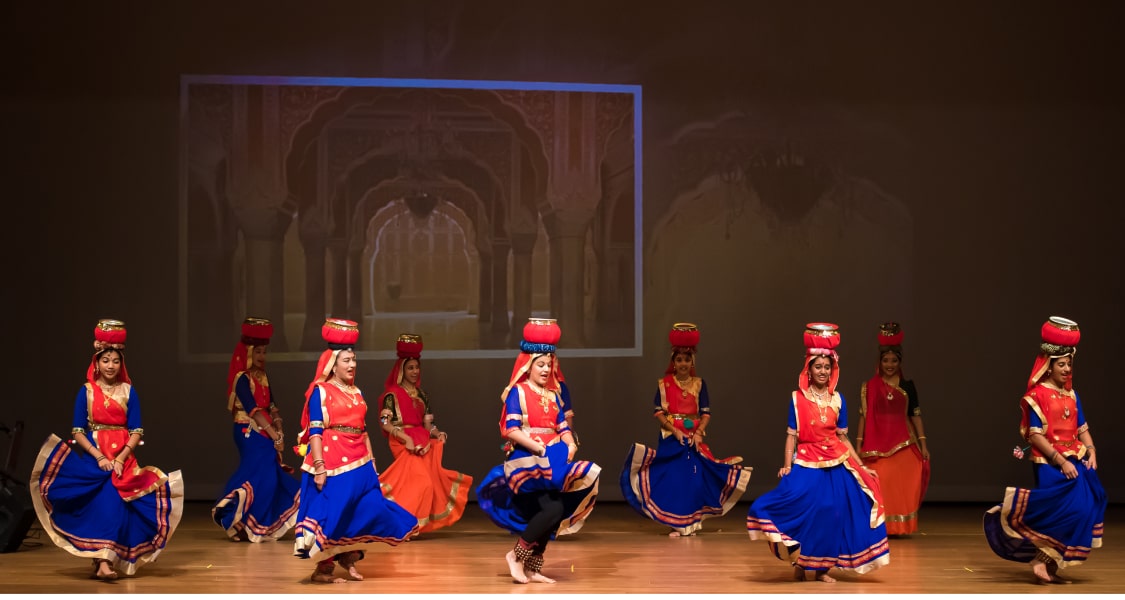Chari is a ceremonial dance that belongs to the Saini community of Ajmer and Gujjar of Kishangarh, Rajasthan. It symbolizes joy and represents the ritual of collecting water in a Chari (pot). Also named the "Welcome Dance," primarily enacted by women, it is usually performed on special occasions, such as the birth of a male child, marriage, or festival.

This female-oriented folk dance is similar to the "Bhavai" folk dance from Rajasthan. It uses earthen, brass pots, or Chari as its central prop. The womenfolk dance while balancing the Chari on their heads and a lighted lamp in it. The women wear traditional outfits, including "Ghagra and Choli" and heavy jewelry items such as Hansli, Timniya, Mogri, Punchi, Bangdi, Gajra (flowers), armlets, Karli, Kanka, and Navr.
Chari dance can sometimes be the traditional fire dance of Rajasthan. In this form of dance, dancers carry brass pots on their heads, balancing them to perfection, and these pots contain lit cotton seeds dipped in oil. Dancers hold this flaming pot on their heads without touching it while performing graceful movements with their hands and moving in circular patterns and deep swirls with their knees.
The dance is accompanied by dholak, harmonium, and nagada (drum) sounds. The dance looks more attractive when the dancers move around the dance floor and create lines of lighted patterns.
